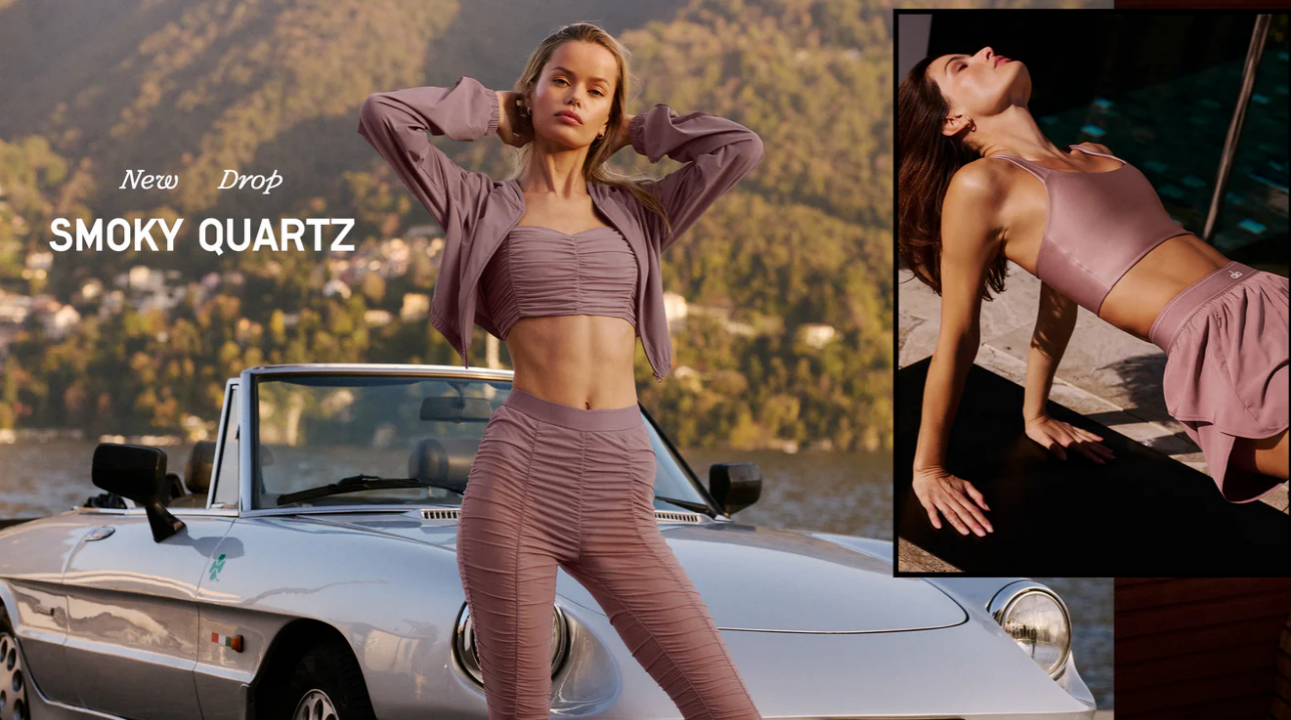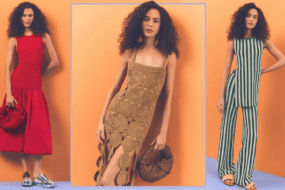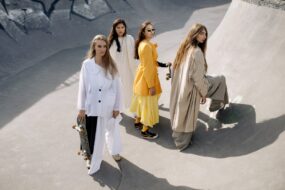
Fashion has always been a reflection of society, culture, and historical events. Over the decades, styles have evolved, mirroring economic shifts, technological advancements, and social changes. This article delves into the defining fashion trends from the 1920s to the present day, highlighting how each era left its mark on the industry and everyday wardrobes.
The 1920s: The Roaring Twenties and Flapper Style The 1920s marked a revolutionary period in fashion, symbolizing liberation and modernity. Women embraced flapper dresses, characterized by their loose fit, dropped waists, and decorative embellishments such as beads and sequins. Short bob hairstyles, cloche hats, and Mary Jane shoes complemented the look. Menswear featured high-waisted trousers, three-piece suits, and fedora hats, reflecting a more polished yet relaxed approach to dressing.
The 1930s: Elegance Amidst the Great Depression Despite economic hardships, the 1930s saw the rise of elegant and sophisticated fashion. Bias-cut gowns that draped gracefully over the body became popular for women, while men continued wearing tailored suits. Hollywood played a significant role in fashion trends, with movie stars like Greta Garbo and Clark Gable influencing the masses. Accessories such as gloves, hats, and fur stoles were common, adding a touch of glamour even in difficult times.
The 1940s: Utility and War-Time Fashion World War II greatly impacted fashion, leading to practical and utilitarian styles. Women adopted tailored suits with padded shoulders, knee-length skirts, and sensible shoes. Rationing influenced fabric choices, promoting simplicity and durability. Men wore military-inspired clothing, including trench coats and structured suits. Post-war, Christian Dior’s “New Look” emerged, emphasizing cinched waists, full skirts, and a return to femininity.
The 1950s: Feminine Silhouettes and Rockabilly Influence The 1950s celebrated ultra-feminine styles for women, with hourglass silhouettes, tea-length dresses, and petticoats. Designers like Dior, Givenchy, and Balenciaga led the fashion scene. Casual fashion introduced capri pants, fitted sweaters, and saddle shoes. Men’s fashion saw a divide between the clean-cut preppy look and the rebellious rockabilly style, popularized by figures like Elvis Presley and James Dean.
The 1960s: The Youth Revolution and Mod Fashion The 1960s marked a turning point in fashion, driven by youth culture and political movements. The mod style, inspired by London’s Carnaby Street, featured mini skirts, bold geometric prints, and go-go boots. Designers like Mary Quant and André Courrèges revolutionized women’s fashion. The hippie movement, emerging later in the decade, introduced bohemian elements such as bell-bottom jeans, tie-dye, and fringe details. Men embraced slimmer suits, turtlenecks, and longer hairstyles.
The 1970s: Disco Fever and Bohemian Chic Fashion in the 1970s was diverse, encompassing disco glamour and laid-back bohemian aesthetics. The disco era featured glitzy jumpsuits, sequins, and platform shoes, epitomized by Studio 54’s nightlife scene. Simultaneously, boho-chic styles embraced peasant blouses, maxi dresses, and earthy tones. Menswear saw a rise in flared pants, leisure suits, and unbuttoned shirts, reflecting both the era’s casualness and excess.
The 1980s: Bold, Bright, and Power Dressing The 1980s was a decade of excess, where fashion embraced bold colors, exaggerated silhouettes, and flashy accessories. Power dressing became prominent among working women, with padded shoulders, structured blazers, and pencil skirts defining corporate attire. Pop culture icons like Madonna and Michael Jackson influenced everyday fashion, leading to trends like neon leggings, leather jackets, and oversized sweaters. Men’s fashion included preppy looks, bomber jackets, and athletic wear, popularized by brands like Adidas and Nike.
The 1990s: Minimalism and Grunge Rebellion A stark contrast to the previous decade, the 1990s leaned towards minimalism and casual wear. The grunge movement, led by bands like Nirvana and Pearl Jam, introduced flannel shirts, ripped jeans, and combat boots. Simultaneously, minimalist fashion, influenced by designers like Calvin Klein, embraced neutral palettes, slip dresses, and simple silhouettes. Streetwear gained traction, with oversized T-shirts, baggy jeans, and sneakers becoming everyday staples.
The 2000s: Y2K Aesthetics and Pop Culture Influence The early 2000s were defined by Y2K aesthetics, characterized by metallic fabrics, low-rise jeans, and flashy accessories. Celebrities like Britney Spears and Paris Hilton popularized trends like crop tops, velour tracksuits, and rhinestone embellishments. The indie and hipster movements emerged later in the decade, favoring skinny jeans, vintage-inspired fashion, and oversized scarves. The rise of digital fashion influencers began shaping consumer choices, with fast fashion brands rapidly responding to trends.
The 2010s: Social Media and the Rise of Athleisure With the explosion of social media, fashion became more accessible and diverse in the 2010s. The athleisure trend dominated, blending sportswear with everyday fashion—think leggings, sneakers, and stylish hoodies. Influencers and bloggers played a significant role in shaping trends, while sustainability and ethical fashion gained traction. The decade also saw the resurgence of 1990s and early 2000s styles, with chokers, mom jeans, and fanny packs making a comeback.
The 2020s: Sustainability and Digital Fashion The 2020s have been shaped by a mix of nostalgia, innovation, and sustainability. The pandemic influenced fashion, leading to the popularity of loungewear and comfortable clothing. Thrift shopping and upcycling have gained momentum, promoting eco-friendly fashion choices. The rise of digital fashion and virtual influencers is reshaping the industry, with augmented reality and NFTs making their way into the fashion world. Gender-fluid fashion and inclusive sizing are becoming more mainstream, reflecting a shift towards diversity and self-expression.
Conclusion Fashion continues to evolve, driven by cultural shifts, technological advancements, and individual creativity. Each decade has left a lasting imprint on style, shaping the way people dress and express themselves. As we move forward, sustainability, innovation, and inclusivity are likely to be key players in defining the future of fashion.






















